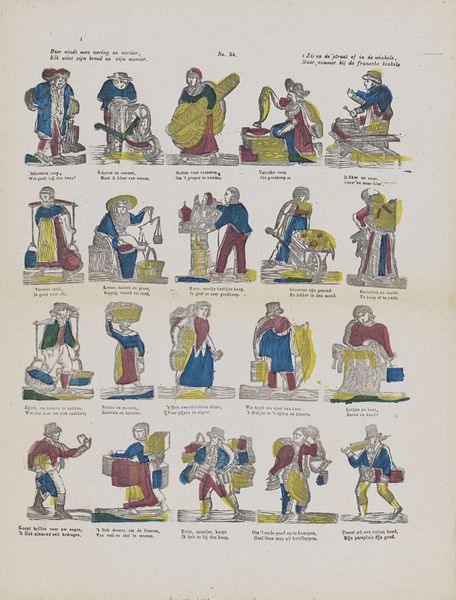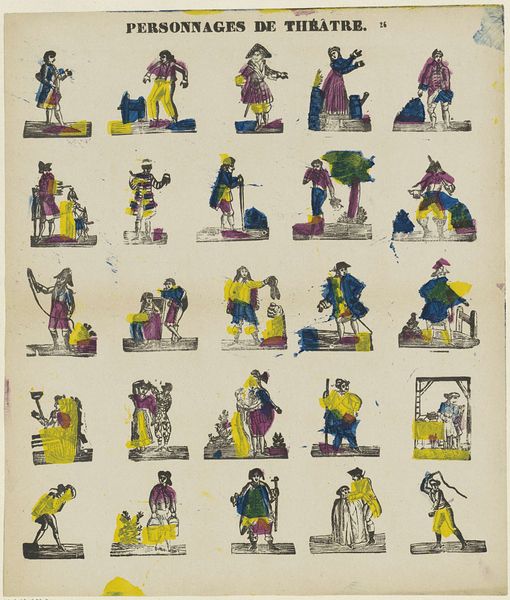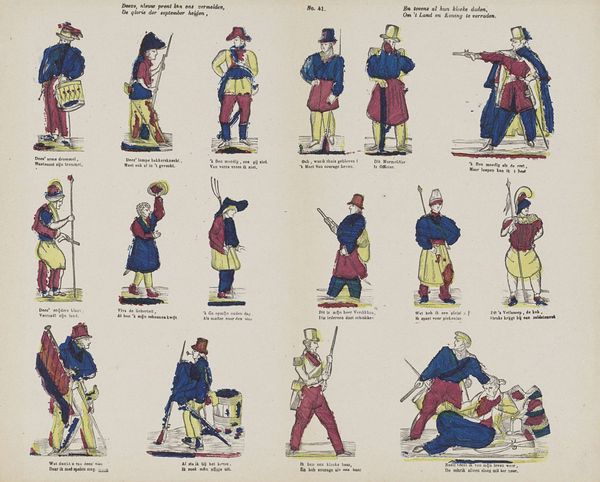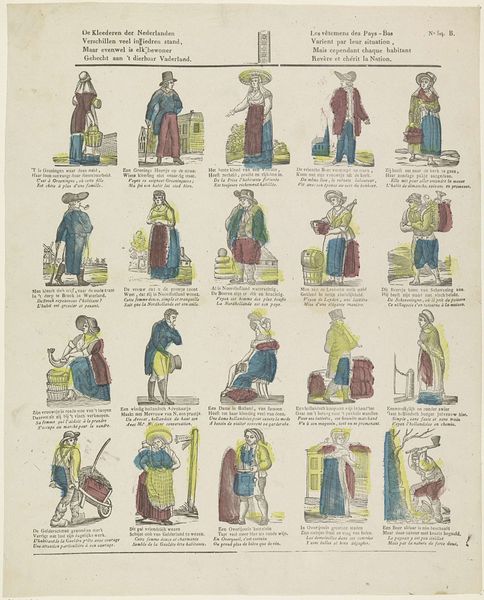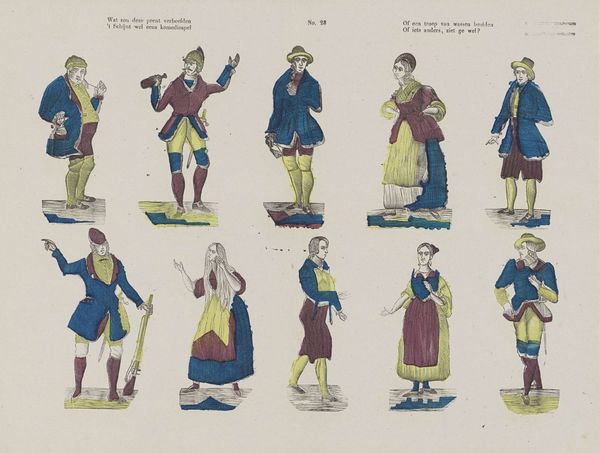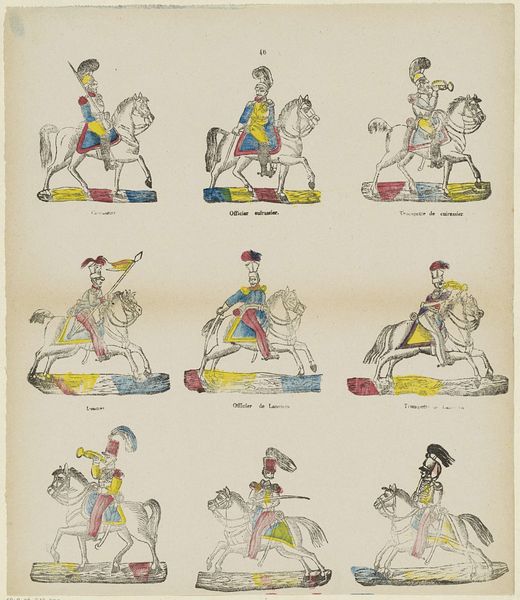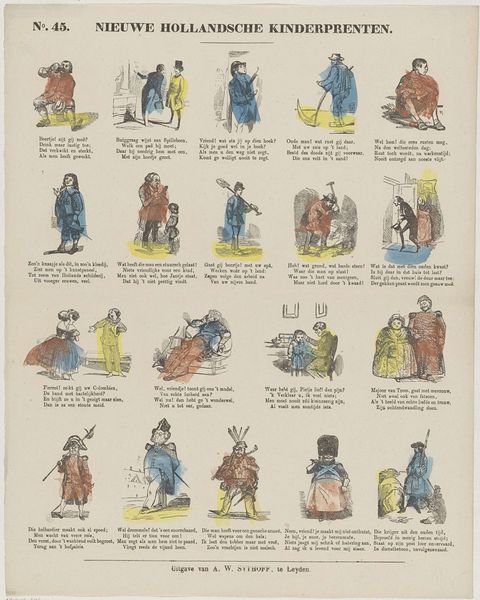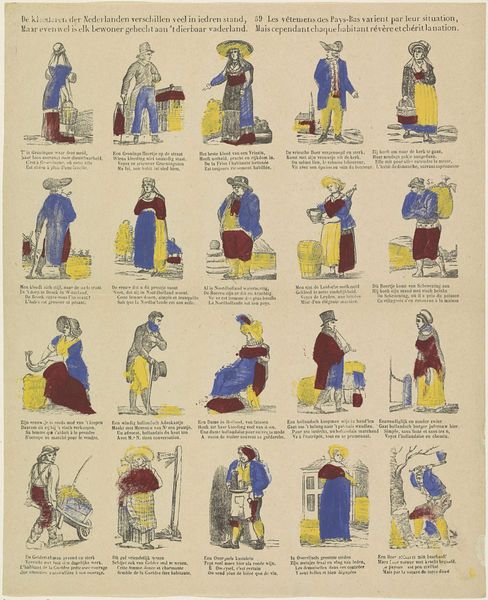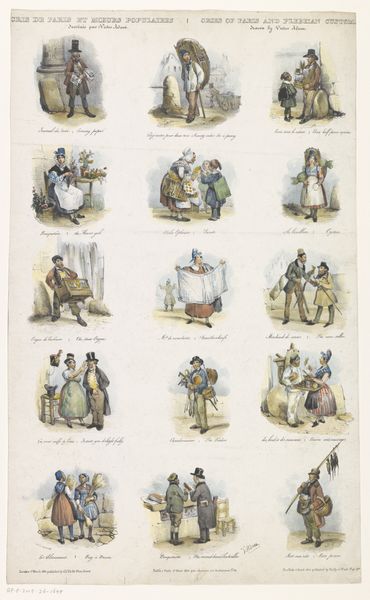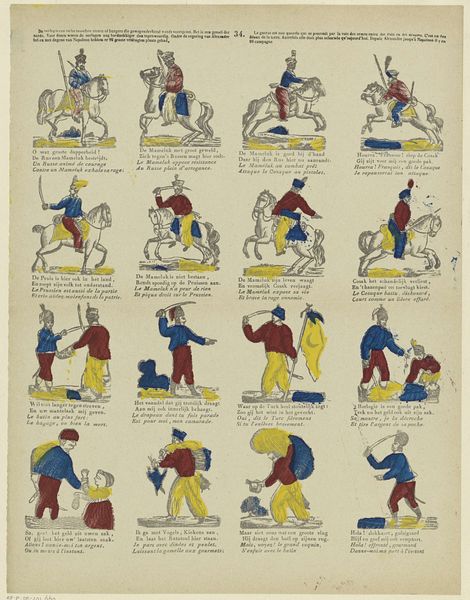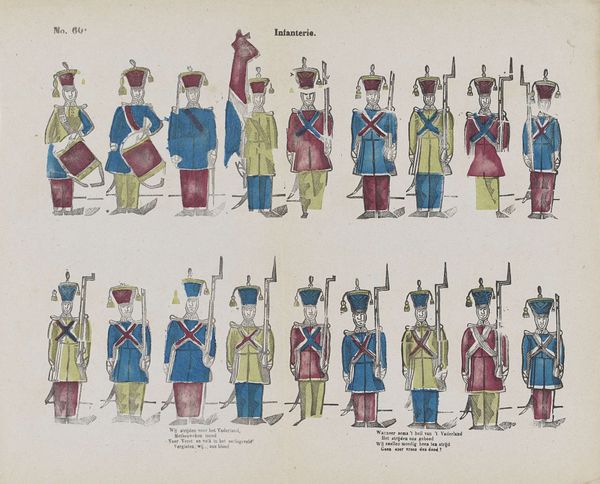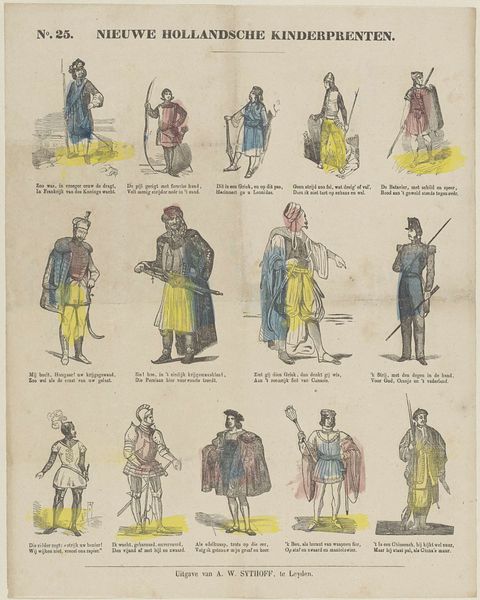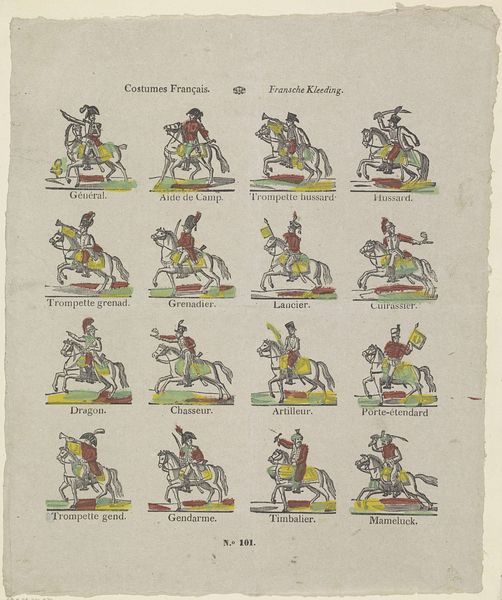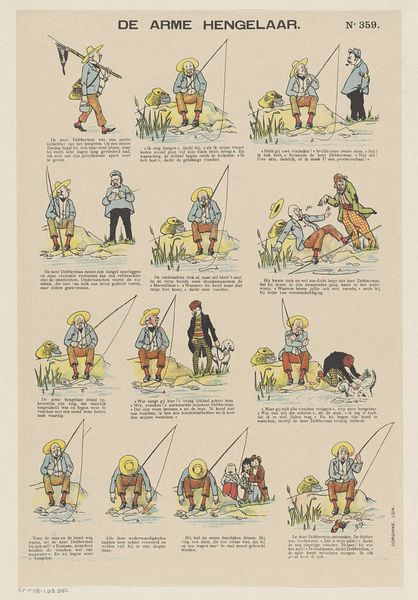
Beijvert u, o jeugd! om goed en wijs te worden, / Bewandelt steeds het pad van wetenschap en deugd. / Zoo zult gij uw geluk op hechte gronden bouwen / Een bron van zoet genot en ware levensvreugd 1848 - 1881
0:00
0:00
lutkiecranenburg
Rijksmuseum
drawing, print
#
drawing
# print
#
figuration
#
watercolour illustration
#
genre-painting
Dimensions: height 390 mm, width 304 mm
Copyright: Rijks Museum: Open Domain
Editor: Here we have a drawing and print work, “Beijvert u, o jeugd! om goed en wijs te worden…” created between 1848 and 1881, by Lutkie & Cranenburg and now at the Rijksmuseum. The layout reminds me of those old flashcards - all these different people are presented so formally! What's your perspective on this piece? Curator: This print speaks volumes about 19th-century Dutch societal values and the burgeoning era of global trade and empire. Each figure, carefully labelled as a representative of a different culture, served as a visual tool for Dutch youth. What does the poem at the top, essentially a moral lesson, paired with these figures suggest to you? Editor: Well, it makes me think that they were literally trying to teach young people how to be good citizens of the world... by showing them stereotypes? It’s a little cringe. Curator: Precisely. These prints often reflect the prejudices and hierarchies inherent in colonial attitudes. Note how these representations contribute to a sense of Dutch superiority and a justification for colonial exploits. Consider, how does this object function within the history of colonialism? Editor: I guess it helped normalize it... making it seem like a fun educational tool when it's actually spreading biased ideas. The figures are all so simply rendered, it strips away any individuality. Curator: Exactly. The apparent neutrality of this “educational” tool is perhaps its most insidious aspect. Understanding how these images circulated and influenced public opinion is key to unraveling the complex legacy of Dutch colonialism. This wasn't just art for art's sake; it was a tool with a specific social function. Editor: I hadn’t thought about it that way – more than just an image, it’s about its role in shaping public opinion and justifying historical actions. Curator: Absolutely. Looking closely helps us understand how images participated in these larger political projects and formed opinions of different cultures.
Comments
No comments
Be the first to comment and join the conversation on the ultimate creative platform.
